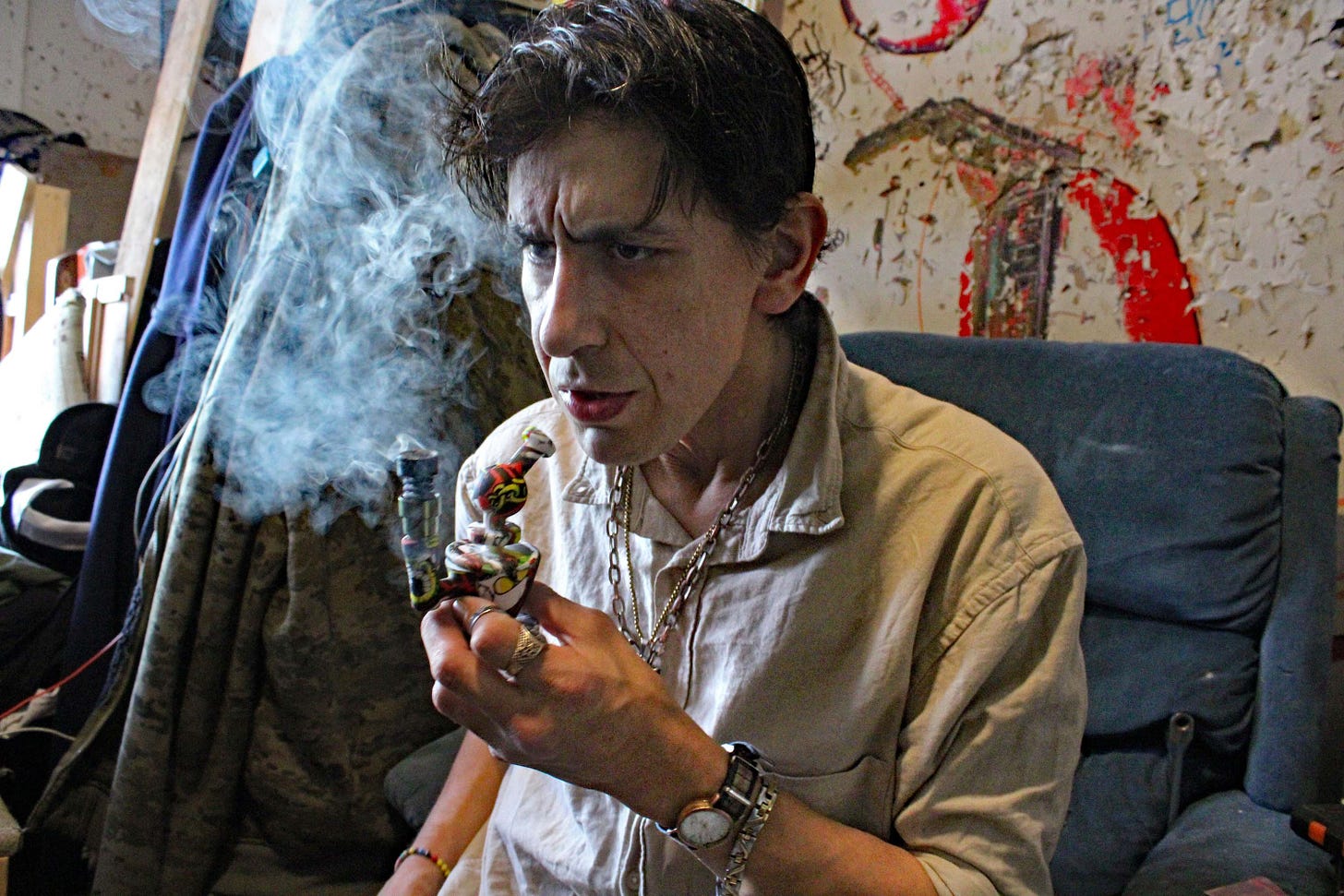Fentanyl: The Most Successful Product in Narco-Business History
Dutch photographer Teun Voeten shares his insights on how fentanyl reshaped North America's drug trade ahead of his new project, Fentanyl: The Silent Killer on the West Coast.
Proponents of drug legalization often argue that humans have always used drugs. But the current landscape of narcotics around the world is an unprecedented phenomenon. While the moderate use of mild stimulants or sedatives has been part of cultures worldwide—like wine, beer, qat, coca, ephedra, opium, and marijuana—stronger substances were historically reserved for specific rituals led by shamans or priests. Even in the not-so-distant past, drug use was mostly limited to a small, artistic, and intellectual elite.
In the 1970s, however, drug use spread widely as the counterculture embraced it as a form of rebellion. This marked the beginning of narcotics as a mass commodity. Today, the commercialization of drugs by a ruthless narco-capitalist complex has turned the industry into a multi-billion dollar behemoth, leaving countries in turmoil and undermining governments globally.
Teun Voeten has released a new work that includes powerful essays by Javier Valdez, the acclaimed Sinaloa journalist who was tragically assassinated in 2017, and by anthropologist Howard Campbell. For those interested, copies can be obtained by reaching out to Teun directly at teunvoeten@gmail.com.
Teun is now embarking on an important new project focused on the devastating fentanyl crisis, which has claimed hundreds of thousands of lives across the United States and Canada, and is beginning to impact Europe. He is crowdfunding this new endeavor, and there are only ten days left to contribute. If you'd like to help bring this project to life, please do so here.
A few decades ago, the range of available drugs was limited to cannabis, heroin, opium, amphetamines, and occasionally LSD. However, globalization and the synthetic drug revolution have created a flourishing and predatory industry. One of its main abilities is to constantly push new substances at an alarming rate. The average consumer today can choose between hundreds of drugs, many of which are openly sold online, including on Telegram and Snapchat. Substances like Ketamine, GHB, MDMA, DMT, Flakka, 3-MMC, 4-MEC, K-2, and 2CB were almost unknown just a few decades ago but are now common in drug-using circles.
In 2020, I began researching crystal meth, a synthetic drug that has been around for nearly a century but has spread worldwide in recent decades. During research for my book The Devil’s Drug: The Global Emergence of Crystal Meth, I encountered something even worse: fentanyl, a synthetic opioid 50 times stronger than heroin. In 2021, I visited Philadelphia’s Kensington Avenue, where a fentanyl-fueled humanitarian disaster was unfolding—a scene repeated in cities like Los Angeles, Vancouver, and San Francisco. Entire downtown areas have descended into a dystopian landscape, with addicted individuals stumbling around or lying unconscious in the streets. The ensuing crime surge has forced many businesses to close, creating a vicious cycle of impoverishment.
Last year, fentanyl claimed 112,000 lives in the United States, making it the deadliest drug on record. Its use is spreading rapidly into Mexico and Canada and is slowly appearing in Europe as well. This fentanyl crisis is the latest phase of an opioid epidemic that began with the mass prescription of Oxycontin, leading many addicted patients to switch to cheaper heroin—a demand readily supplied by Mexican cartels.
Over time, dealers in the US began lacing heroin, cocaine, and methamphetamine with fentanyl to increase potency. Many users overdosed before dealers found the right dosage—a few milligrams can be fatal. Initially, American dealers sourced fentanyl in bulk from China, but as authorities cracked down on these shipments, Mexican cartels stepped in. Already well-established in the methamphetamine business, the cartels had the labs and connections with Chinese chemical suppliers to produce fentanyl as well.
Today, Mexico is the largest fentanyl producer for the US market, with the Sinaloa Cartel and the Jalisco New Generation Cartel (CJNG) leading production. Initially, fentanyl was a "red line" for the old guard of the Sinaloa Cartel due to its lethality. However, the younger generation made a cynical calculation: the profits from new addicts would far outweigh the losses from overdoses. Thus, production began in earnest. The numbers speak for themselves: in 2014, authorities seized 11 kilos of fentanyl; by 2022, that figure had skyrocketed to 8,400 kilos, with the main transfer point being the Tijuana/San Diego border.
The US has responded with strong measures, targeting cartel members involved in fentanyl production for arrest and extradition—a nightmare scenario for Mexican narcos. Sinaloa Cartel leader El Chapo and his son, Ovidio Guzmán, have already been extradited. Last November, in an attempt to mitigate pressure, the Sinaloa Cartel officially prohibited fentanyl production. Further infighting broke out when Joaquín Guzmán, another son of El Chapo, betrayed El Mayo—the cartel's second-in-command—and delivered him to US authorities. This instability has left the Sinaloa Cartel vulnerable, and many fear the CJNG will exploit this weakness.
The role of China in the fentanyl crisis is notable. It is important to remember that, in the 19th century, Western powers flooded China with opium. When China resisted this narcotic assault, the British Empire responded with the Opium Wars to maintain the drug trade. Today, it seems the tables have turned, with China supplying fentanyl and precursor chemicals to the West. Whether this is an intentional policy of the Chinese Communist Party or simply a convenient byproduct remains an open question. A US military white paper has accused China of waging a chemical war against the United States, and former President Donald Trump echoed this sentiment, calling it "almost a form of warfare." With the upcoming US election, the fentanyl crisis is poised to be a major issue.
Former Mexican President Andrés Manuel López Obrador repeatedly denied that fentanyl was being produced or consumed in Mexico, instead blaming the US's insatiable demand for drugs. With Claudia Sheinbaum now in office as of October, it remains to be seen whether Mexico’s approach to the crisis will change.
Teun Voeten has a diverse background in cultural anthropology and philosophy and has worked as a war photographer covering conflicts around the world since 1990. He has authored books on New York’s homeless population, the civil war in Sierra Leone, and the drug violence in Mexico. Most recently, Voeten has written about global trends in the crystal meth market and is now investigating the fentanyl crisis.
To support this crucial research, Teun Voeten has launched a crowdfunding campaign on Kickstarter. Please consider contributing to Fentanyl: The Silent Killer on the West Coast.







Western Powers. Narcotics. Yeah right. If you want to know who REALLY was behind the pushing of opium on China, look up the history of the Sassoon family. Beginning in Bagdad. And try other search engines than Google. Got it?